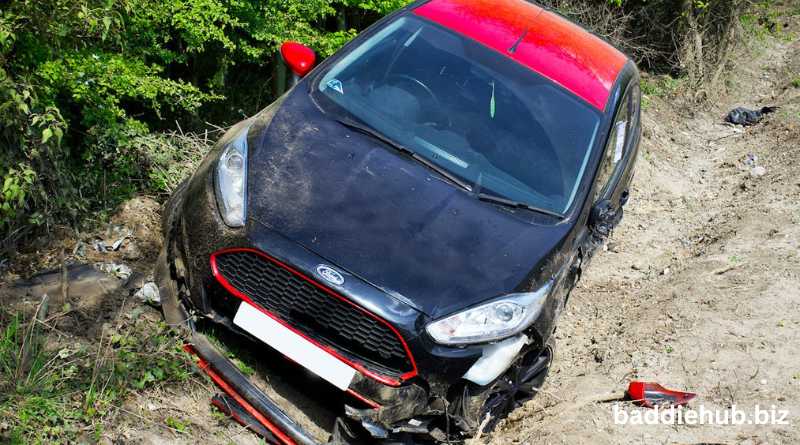
The dynamics of multi-vehicle crashes present a unique and heightened level of danger compared to single-vehicle accidents or those involving just two cars. Multi-vehicle crashes, often referred to as pile-ups or chain-reaction accidents, involve three or more vehicles and can result in devastating consequences.
While any collision on the road is cause for concern, multi-vehicle crashes tend to amplify the risks and complexities involved.
Just this March, News Channel 6 reported on a multiple-vehicle crash in Texas. The accident left two dead and injured another seven.
ABC News reported on a somewhat similar accident late last year in Ohio. This particular accident left six dead, including three teens.
All these incidents establish one thing very clearly – multi-vehicle crashes are no joke and can lead to serious casualties. Today, we delve into some of the reasons why these crashes tend to be more perilous than regular collisions.
Chain Reaction Effect
The defining characteristic of multi-vehicle crashes is the chain reaction effect. It typically starts with one vehicle colliding with another, setting off a domino effect as subsequent vehicles become involved.
Unlike single-vehicle crashes where the impact is contained, multi-vehicle collisions escalate rapidly, involving numerous vehicles within a short period. This chain reaction effect exponentially increases the force of impact and the likelihood of injuries or fatalities for those involved.
Increased Complexity for Rescue Operations
Multi-vehicle crashes pose significant challenges for rescue operations due to their complexity and scale. Extracting occupants from tangled wreckage requires meticulous planning, specialized equipment, and coordinated efforts from rescue teams.
Multi-vehicle collisions demand simultaneous attention to multiple points of impact. The need to extricate occupants from several vehicles while addressing secondary hazards adds layers of complexity to rescue operations. This can potentially delay critical medical assistance and increase the risk of adverse outcomes for those injured.
According to TorHoerman Law, the complexities associated with car accidents can be very hard to navigate. With the involvement of multiple vehicles, such accidents can be even more difficult to deal with, especially for rescuers. This can be understood by studying a recent accident scene in Chicago, Illinois.
According to CBS News, a three-vehicle crash in Chicago led to one person being severely injured. The injured person was then evacuated from the accident site via helicopter as there was no quicker way to get them to the hospital. The complexity of this rescue operation was so massive that authorities had to close down the traffic.
The injured, if they survive, will have surely sought the help of one of the many top personal injury attorneys in Chicago IL. However, Chicago personal injury lawyers will need to gather crucial details of the accident from the scene and witnesses before proceeding with lawsuits.
Limited Escape Routes
In the chaos of a multi-vehicle crash, escape routes become severely limited. Vehicles are often sandwiched between others, leaving occupants trapped and vulnerable to further collisions.
Unlike in single-vehicle accidents where drivers may have more control over their surroundings, those caught in a pile-up have minimal options for maneuvering. The lack of escape routes significantly heightens the risk of serious injuries as occupants are unable to avoid additional collisions.
Secondary Hazards
Multi-vehicle crashes introduce a myriad of secondary hazards that further compound the danger. These hazards may include fire, explosions, hazardous material spills, and subsequent collisions.
A single collision can trigger a series of secondary events, leading to chaos and escalating the severity of the incident. For instance, a pile-up on a highway may result in subsequent vehicles crashing into the wreckage, exacerbating injuries and complicating rescue efforts.
The presence of secondary hazards makes multi-vehicle crashes inherently more dangerous and challenging to manage for first responders and emergency personnel.
High Speeds and Close Proximity
Multi-vehicle crashes often occur at high speeds and near other vehicles. In congested traffic conditions or on highways with fast-moving vehicles, the margin for error is minimal, and reaction times are severely compressed. Additionally, the close proximity of vehicles in multi-vehicle crashes increases the likelihood of multiple impacts, further escalating the severity of injuries and damage.
Frequently Asked Questions (FAQs)
What is the most dangerous type of collision?
The most lethal form of accident is undoubtedly a head-on collision. In such collisions, the combined speeds of both vehicles involved are taken into account, making even relatively low-speed accidents potentially catastrophic.
Who is at fault in a multi-car accident?
Determining fault in a multi-car accident typically involves examining factors such as witness statements, police reports, and evidence like skid marks or vehicle damage. Comparative negligence laws may assign fault based on each driver’s degree of responsibility, often requiring insurance companies or courts to make assessments.
What type of lawyer will handle a multi-car crash?
A personal injury attorney with expertise in motor vehicle accidents, particularly those involving multiple vehicles, is best suited to handle multi-car crash cases. They possess the necessary knowledge to navigate complex legal proceedings related to such personal injury claims and advocate for their clients’ rights and compensation.
In conclusion, multi-vehicle crashes present a heightened level of danger compared to regular collisions. The former is more dangerous due to several reasons including the limited number of escape routes, increased complexity of rescue operations, and so on.
Recognizing the unique challenges posed by multi-vehicle crashes is crucial for implementing effective safety measures and emergency response strategies. Only then will it become easier to mitigate the risks and reduce the severity of these devastating incidents on our roads.







